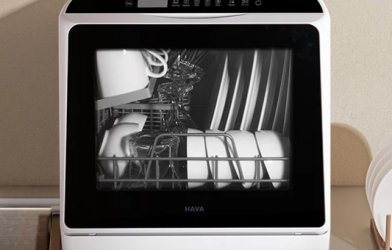Subtotal $0.00
Dishwashers are a vital part of any kitchen, taking on the job of cleaning and sanitizing your dishes with minimal effort. But when it doesn’t dry your dishes properly, it can be incredibly frustrating. Fortunately, there are a few simple steps you can take to ensure your dishwasher performs at its best during the drying cycle. Let’s explore these tips so you can enjoy perfectly dry dishes after every wash.
1. Properly Load Your Dishwasher
The first step in maximizing your dishwasher’s drying cycle is ensuring that you load it correctly. While each model may have its specific loading instructions, here are some general tips to follow:
- Place dishes facing downward towards the water jets. Items like bowls and cups should be placed at an angle to allow water to roll off, preventing water from pooling inside.
- Avoid overcrowding your dishwasher. Dishes packed too closely together won’t allow enough airflow, which means they won’t dry properly.
- Refer to your dishwasher’s manual for the best loading practices. Some models also feature enhanced drying capabilities, so upgrading might be an option if drying is a major concern.
2. Use a Rinse Aid
If you’re not already using a rinse aid, this simple addition can significantly improve your dishwasher’s drying ability. A rinse aid reduces the surface tension of the water, allowing it to slide off the dishes more easily. This prevents the formation of water spots and helps dishes dry faster.
If you prefer a more natural alternative, white vinegar can provide similar benefits while also helping to eliminate odors.
3. Utilize Heat for Better Drying
Dishwashers have a heating element that helps raise the water temperature for washing and drying. If your dishes aren’t drying properly, make sure you’re using a high-heat setting, such as the “Sanitize” or “Heated Dry” cycle. The extra heat will help the water evaporate, leaving your dishes thoroughly dry.
4. Allow Airflow After Each Cycle
If your dishes are still damp after the cycle ends, they might not be getting enough airflow. After the wash, crack open the door of your dishwasher to allow the moisture to escape. Be sure to leave the door slightly ajar to keep the heat inside, which helps with drying. This is especially helpful for older units, as newer dishwashers may not require as much ventilation.
5. Unload the Bottom Rack First
If you notice water pooling in cups or bowls, try unloading your dishwasher differently. Start with the bottom rack first. This prevents water from dripping down onto the clean dishes below. After that, move on to the middle rack and finally the top rack.
While this won’t eliminate all moisture issues, it will help reduce the amount of hand-drying needed after the cycle.
When to Repair or Replace Your Dishwasher
Despite all your efforts, there may come a time when your dishwasher simply isn’t drying your dishes properly. If basic fixes like rinse aids or cycle changes don’t work, the issue could be more serious, like a faulty heating element or motor.
If the repair involves both water and electrical components, it’s best to leave the job to professionals. At DeWaard & Bode, we offer expert dishwasher repair services.
When Should You Replace Your Dishwasher?
- If the repair costs exceed the cost of a new unit, especially for models that were initially inexpensive, replacing it might be more cost-effective.
- Dishwashers over 8-10 years old may be nearing the end of their lifespan. Even entry-level models now come with energy-efficient features and improved drying systems.
- If you’re looking for an upgrade, there are plenty of newer dishwashers with advanced drying features like AutoAir™ or ProDry™ that provide better performance and are quieter than older models.












